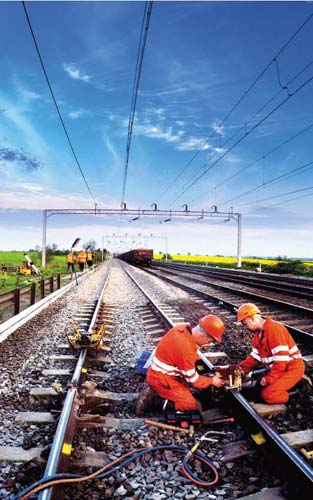National Planning Framework for Scotland 2
Long term spatial strategy for Scotland's development.
INFRASTRUCTURE
| THE SCOTTISH GOVERNMENT IS COMMITTED TO MAKING BEST USE OF THE EXISTING RAIL AND ROAD NETWORKS. THAT MEANS THAT TRANSPORT ISSUES WILL NEED TO BE ADDRESSED FROM THE OUTSET IN PLANNING FOR FUTURE DEVELOPMENT. | |
103. The competitiveness of places depends on adequate investment in infrastructure. Improvements in transport infrastructure are needed to strengthen international links, tackle congestion, reduce journey times between our cities and support our rural communities. Parts of our electricity transmission network need to be strengthened if we are to realise the potential of our renewable energy resources. New installations are needed for the more effective management and recycling of waste. Developing local heat distribution networks can help us to achieve much greater efficiency in our use of energy and resources. To ensure the sustainability of these investments, the implications of a changing climate must also be considered. For example, greater investment in catchment and coastal management may be needed to reduce the risk of flooding. In some areas the capacity of water and drainage infrastructure needs to be increased to support economic growth and regeneration.
NATIONAL DEVELOPMENTS
104. Legislation provides for the National Planning Framework to be used to designate certain projects as national developments. Designation in the Framework is the mechanism for establishing the need for these developments in Scotland's national interest. The Government has indicated that major transport, energy and environmental infrastructure projects may fall within this category of development. In a statement to Parliament in September 2007, the Cabinet Secretary for Finance and Sustainable Growth announced that projects which may be identified as national developments are those which:
- make a significant contribution to Scotland's sustainable economic development;
- strengthen Scotland's links with the rest of the world;
- deliver strategic improvements in internal connectivity;
- make a significant contribution to the achievement of climate change, renewable energy or waste management targets;
- are essential elements of a programme of investment in national infrastructure; or
- raise strategic issues of more than regional importance (projects with impacts on more than one city region, for example).
105. On the basis of an assessment against these criteria, the Scottish Government has identified the following projects as national developments (see Map 10):
1. Replacement Forth Crossing;
2. West of Scotland strategic rail enhancements;
3. High-speed rail link to London;
4. Strategic airport enhancements;
5. Grangemouth Freight Hub;
6. Additional Container Freight Capacity on the Forth;
7. Port developments on Loch Ryan;
8. Scapa Flow Container Transhipment Facility;
9. New power station and transhipment hub at Hunterston;
10. New non-nuclear baseload capacity at other existing power station sites;
11. Electricity grid reinforcements;
12. Central Scotland Green Network;
13. Metropolitan Glasgow Strategic Drainage Scheme;
14. 2014 Commonwealth Games facilities.
Statements of need in respect of each of these developments are set out in the Annex. As developments of national importance, the Scottish Government expects their design to be of a high quality. Given the Government's climate change targets, it will be important to ensure that they are designed to minimise their carbon impacts. Care must also be taken to avoid damage to the integrity of sites protected under the EU Habitats Directive. Mitigation or compensation measures may be needed to counteract any adverse effects on emissions or Natura 2000 sites.
TRANSPORT
106. Scotland needs an effective national transport infrastructure which will facilitate sustainable economic growth. A clear, long-term vision is vital because transport infrastructure can take a long time to deliver and has a lifespan measurable in decades. It also helps to give developers and transport operators the certainty they need if they are to commit to major strategic investments.
107. We need to reduce journey times and make them more reliable; make connections which build and sustain economic growth; and improve links between cities, towns and rural communities throughout the country. The Scottish Government is committed to international efforts to promote more sustainable patterns of transport in order to minimise climate change and protect the global environment. A key challenge is to break the link between economic growth and increased traffic and emissions.
108. The strategic outcomes set out in the National Transport Strategy are to:
- improve journey times and connections, to tackle congestion and the lack of integration in transport;
- reduce emissions, to tackle the issues of climate change, air quality and health improvement; and
- improve quality, accessibility and affordability, to give people a choice of public transport, where availability means better quality services and value for money or an alternative to the car.
109. The Scottish Government is committed to making best use of the existing rail and road networks. That means that transport issues will need to be addressed from the outset in planning for future development. Development plan land allocations must take account of the availability of existing public transport infrastructure and the capacity of transport networks. Promoting higher densities and mixed use development close to public transport nodes will be important in urban areas. In rural areas public transport is not a practical answer to all travel needs, though well developed local service networks can help to reduce the need for long distance travel. The Government is preparing guidance to support a proportionate but effective approach to transport appraisal and modelling for development planning and management.
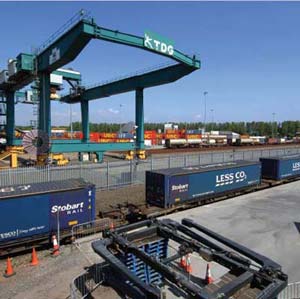 110. The Scottish Government is committed to expediting the replacement Forth crossing and electrification of the main rail line between Edinburgh and Glasgow. Transport infrastructure commitments for the period to 2012 include implementation of the Airdrie - Bathgate and Borders rail link projects; new surface rail links serving Edinburgh and Glasgow airports; continuing improvements to Edinburgh's Waverley Station; removing the bottleneck at the Raith junction on the M74; completion of the motorway network by delivering the M74 Extension and upgrading of the A8 and A80 to motorway standard east of Glasgow; and construction of the Aberdeen Western Peripheral Route.
110. The Scottish Government is committed to expediting the replacement Forth crossing and electrification of the main rail line between Edinburgh and Glasgow. Transport infrastructure commitments for the period to 2012 include implementation of the Airdrie - Bathgate and Borders rail link projects; new surface rail links serving Edinburgh and Glasgow airports; continuing improvements to Edinburgh's Waverley Station; removing the bottleneck at the Raith junction on the M74; completion of the motorway network by delivering the M74 Extension and upgrading of the A8 and A80 to motorway standard east of Glasgow; and construction of the Aberdeen Western Peripheral Route.
111. It will be necessary to address significant development pressures over the next 25 years, particularly on the east side of the country where the population and the number of households are growing most rapidly. Investment will be needed to maintain and enhance essential transport infrastructure, support urban expansion, improve access to facilities and services, facilitate sustainable economic growth, and strengthen international gateways for passengers and freight. Ports and airports providing international freight and passenger links will need to be supported by an effective road and rail infrastructure.
MAP 5 STRATEGIC TRANSPORT CORRIDORS
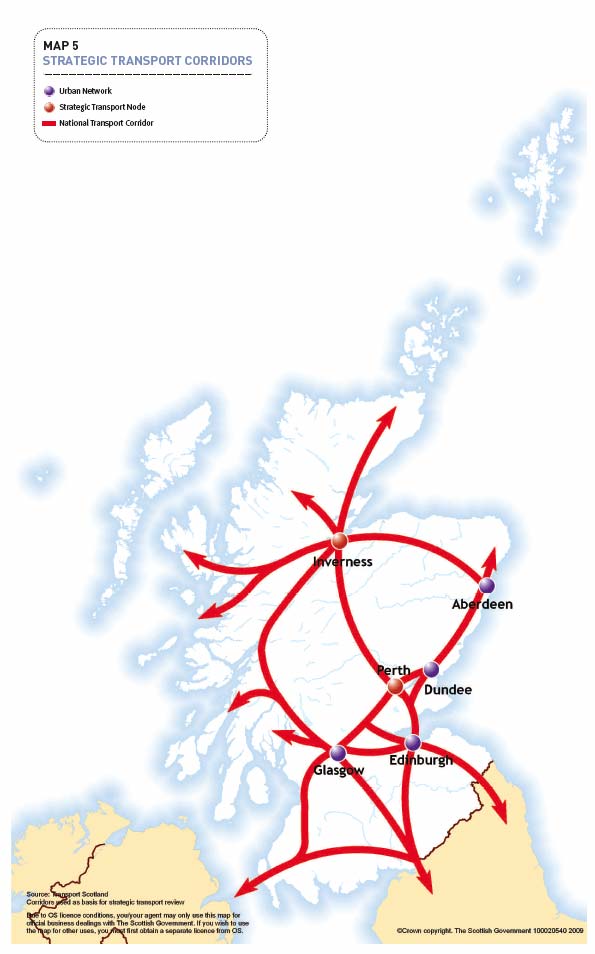
112. There is a need to tackle congestion and improve public transport links between and within our cities. Improved connectivity can help unlock the potential of priority areas for regeneration such as the Clyde Corridor and Ayrshire, enabling more people to become economically active. Improvements in transport infrastructure are needed to support economic activity and improve access to facilities and services in our rural areas. It will be important to ensure that key locational decisions, and the investments in transport infrastructure necessary to support them help to move us towards a more sustainable, low carbon economy.
113. For the period from 2012, the Strategic Transport Projects Review ( STPR) has developed a programme of interventions, based on an analysis of constraints and opportunities in 20 strategic corridors, the urban networks of Glasgow, Edinburgh, Aberdeen and Dundee and the strategic nodes of Perth and Inverness (see Map 5). The National Planning Framework reflects the outcome of the Review.
External Links
114. Economic success will depend on good connections with the rest of the United Kingdom and global markets. Scotland's position on the Atlantic seaboard makes it particularly important to respond to the changing geography of Europe and the development of European markets. We also need to strengthen links with North America and the developing economies of Asia.
115. The European Union ( EU) is Scotland's largest market for goods and the number of tourists from European countries is growing. The European Spatial Development Perspective recognises the importance of strengthening West-East links in Northern Europe and the first Framework identified reviving historic links with the Baltic Region as offering particular potential. The economies of the countries of Eastern Europe have been developing rapidly. With good connections, their business and leisure markets offer major opportunities. The EU is promoting the development of a well-functioning and sustainable Trans-European Transport Network ( TEN-T) comprising roads, railways and shipping routes. The Scottish Government will press for the TEN-T network to be extended to North-East Scotland. It will also ensure that the strategic needs of key national and international cargo and ferry links are taken into account in considering improvements to road and rail infrastructure.
116. The Scottish Government is strongly committed to promoting a shift to more sustainable modes of transport. However, given Scotland's geographical position, good air links are vital for international connectivity and competitiveness. Air links to their countries of origin are important to the people from other parts of Europe now contributing to the Scottish economy, and good international connectivity will be a crucial factor in encouraging more people to come to live and work in Scotland. The tensions between providing support for necessary air travel and reducing harmful emissions are addressed in more detail in the Environmental Report.
117. In promoting enhancements at our airports, the Scottish Government is placing emphasis on measures which improve surface access by public transport. The Government has announced that a new station serving Edinburgh Airport will be built at Gogar on the Fife rail line. The construction of the Dalmeny chord, a new line linking the Fife and Edinburgh - Glasgow routes, will allow trains between Glasgow and Edinburgh to stop at the airport station. An interchange with the Edinburgh tram link will facilitate onward travel to the airport by public transport. The West Edinburgh Planning Framework safeguards land to meet long-term requirements and recognises the potential of the area in the vicinity of Edinburgh Airport as an international business location capable of attracting shared service centres for world-class companies.
118. Glasgow Airport will continue to serve business and holiday markets. Preparatory work for the Glasgow Airport Rail Link has started and it is expected that the first trains will be running by the end of 2011. The Glasgow and the Clyde Valley Structure Plan safeguards land to meet the potential operational needs of the airport to 2030. At Prestwick Airport there is a need for improvements to rail and bus interchanges and potential for the further development of associated service businesses. Development plans safeguard land for future requirements at Aberdeen and Inverness airports.
119. The services offered by Edinburgh, Glasgow and Prestwick airports are in some respects complementary and there may be potential for strengthening connections between them. Linking our main cities and airports with higher speed trains could offer a much wider choice of destinations, allow mass passenger transfer between airports, and open up the South-West to more visitors. Increased capacity on rail services between Prestwick Airport and Glasgow city centre will be the minimum requirement over the next 25 years.
120. Cross-Border road and rail links are of prime economic importance and congestion and lack of infrastructure outwith Scotland can have an adverse impact on access to Europe and other parts of the UK. The economic benefits of tourism can be spread more widely if more of Scotland can be brought within 3 hours of major English cities. There is a need to improve journey times and the frequency of rail services to key destinations such as London, Manchester, Leeds and Birmingham. Reducing journey times on routes between Aberdeen and Newcastle would improve the connectivity of knowledge economy clusters on the East Coast. Improvements to the West Coast Main Line would allow more cross-Border freight to be moved by rail. The Scottish Government will work with the UK Government and other bodies to strengthen cross-Border transport links.
121. A regular and reliable 4-hour journey time on existing lines between Central Scotland and London would help to make the train more competitive with flying. London's high speed link to the Continent makes it possible for a journey such as Inverness to Marseilles to be completed in a day. However, the scope for further increases in speed on the existing rail network is limited. The Scottish Government is in discussion with the UK Government on the development of a high-speed rail link to reduce journey times between Central Scotland and London to under 3 hours and provide direct rail services to the Continent.
122. Ports make a vital contribution to the economy and are modernising to meet projected long term growth in world trade. A growing proportion of freight is containerised. The number of containers handled by Scottish ports has been increasing and is expected to continue to increase in the long term. On the East Coast, the Firth of Forth is a key strategic freight gateway and there is potential for further expansion of port capacity, including container freight facilities. There is potential to handle coastal services from English ports as well as more international traffic, thus promoting the movement of a higher proportion of containerised freight by sea.
123. The Grangemouth area contains Scotland's largest container port, with important European, Baltic and global connections. Approximately 9 million tonnes of cargo are handled through its docks each year and there is scope for further expansion. Forth Ports is concentrating its Scottish freight business at Grangemouth and has announced plans for the construction of 1 million sq ft of warehousing. English, Welsh & Scottish Railway Holdings Limited plans to offer direct rail freight services to Continental Europe from Grangemouth. Grangemouth is also home to most of Scotland's petrochemical industry. Improvements to strategic road and rail infrastructure will allow the area to function to its full potential as an intermodal freight hub.
MAP 6 FREIGHT TRANSPORT
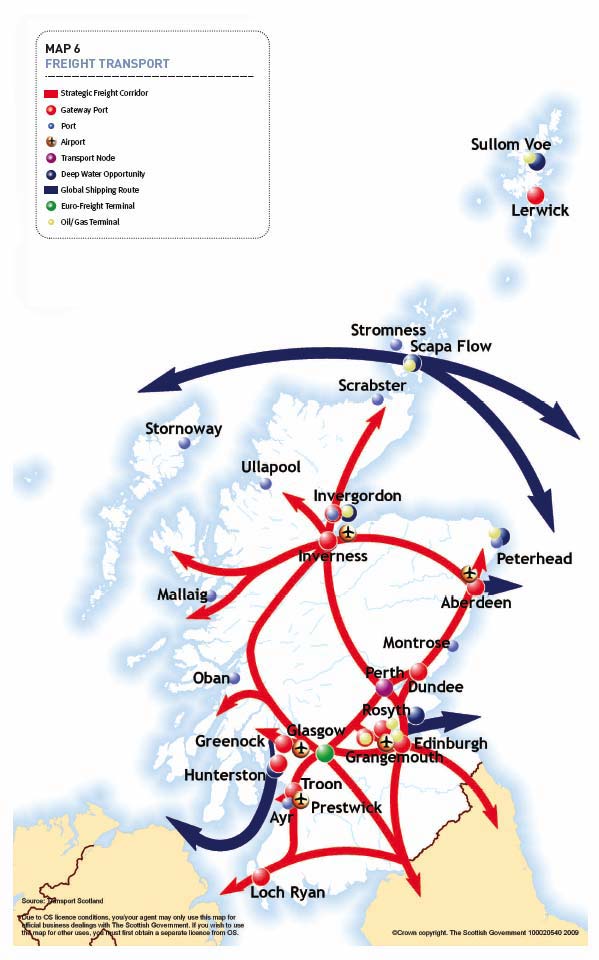
124. A substantial area of reclaimed land immediately to the west of the Rosyth dockyard offers the opportunity to create a new container terminal as part of the wider development of Rosyth as a key East Coast port. The location has the potential to offer deep water berthing accessible 24 hours a day. It can be made accessible by sea, road and rail, making it suitable for multi-modal operations.
125. The Ireland - United Kingdom - Benelux Euro-route follows the A77 and A75 trunk roads via Cairnryan, Stranraer and Dumfries. Stena Line plans to develop a new gateway port on Loch Ryan. The Scottish Government is already committed to spending more than £80 million to upgrade the A75 and A77 and the STPR identifies further improvements as a scheme for delivery from 2012. In addition, Ireland's National Spatial Strategy recognises the potential for moving freight through Scotland to avoid congestion on routes to England's East Coast ports and the matter is being pursued by the British - Irish Council.
126. The Government is committed to supporting the expansion of direct ferry links from Scotland. The Rosyth - Zeebrugge service resumed under a new operator in May 2009. The potential for a new ferry route between Kristiansund in Norway, Shetland, the UK and Continental Europe has been market tested by the partners involved and a preferred operator is taking the project forward. The Scottish Government and the Northern Ireland Executive are funding an economic appraisal of the case for restoring the ferry service between Campbeltown and Ballycastle.
127. The international trend is towards larger container vessels and few existing European ports offer the channel and berth depths necessary to accommodate the largest container ships. Against this background, the sheltered deep water locations at Hunterston and Scapa Flow offer substantial opportunities for developing new transhipment and gateway facilities linked to world shipping routes (see Map 6). The Ayrshire Structure Plan safeguards Hunterston for the development of an international transhipment hub. The realisation of this potential will depend on efficient and effective access through the road and rail network. Orkney Islands Council is currently assessing the potential environmental impacts of establishing an international container hub at Lyness on the island of Hoy.
Internal Connectivity
128. The Forth road crossing at Queensferry is a key element of Scotland's national transport infrastructure. It is vital to the economy of Fife, an essential link for the East Coast Corridor and crucial to the connectivity of Perth and the Highlands and Islands. The Government is taking forward its replacement as a matter of priority.
129. The Government is focusing on reducing rail journey times between cities and making best use of the rail network for commuting journeys into city and town centres. Electrification of the rail line between Edinburgh and Glasgow will allow up to six trains an hour between them, with express services travelling from city centre to city centre in around 35 minutes, allowing the two cities to function as a single economic entity. Planned investment in all routes across Central Scotland could mean as many as 13 services an hour between the two cities within 10 years.
130. Expanding the capacity of the rail network to accommodate the projected growth in passenger and freight traffic will involve the use of longer trains, some new track, the provision of new and lengthened platforms, improvements in signalling and new information systems. To serve differing passenger needs, fast connections between the major cities will need to be complemented by services stopping at intermediate stations. Facilities which allow convenient interchange with other modes of transport are also needed. Planning policies should aim to maximise the use of existing services, stations and terminals before considering the need for new ones.
131. There is a need to widen the range of services to and from our main cities and, in particular, to tie areas to the South and West of Glasgow more closely to the major centres of the Central Belt. The Government is committed to providing the additional capacity needed to support expanded rail services from Waverley and Haymarket Stations in Edinburgh.
132. While marginal reductions in short journey times are not as important to passengers as punctuality, reliability and comfort, significant reductions in longer journey times can deliver worthwhile economic benefits. Bringing Dundee, Aberdeen, Inverness and Newcastle closer to the Central Belt can do a lot to strengthen economic relationships between the city regions. Reducing journey times between Aberdeen and Inverness will help us to capitalise on synergies in the North-East and Highland economies. The scope for developing functional relationships is increased where travel times can be reduced below 60 minutes. Packages of measures have been identified to reduce train journey times between Inverness and Edinburgh by 35 minutes, and to cut around 20 minutes off train journey times between Aberdeen and the Central Belt. The construction of a new rail line between Inverkeithing and Halbeath would allow journey times through Fife to be reduced.
 133. For trunk roads, the Government is focusing on tackling congestion where it affects journey time reliability, targeted enhancement of capacity, managing demand on the network and addressing the accessibility needs of rural areas. Work on the M74 extension between Fullarton and the M8 at the Kingston Bridge is underway. The projects to upgrade the A8 between Baillieston and Newhouse and the A80 between Stepps and Haggs to motorway standard are both expected to be completed in 2011. The completion of the Aberdeen Western Peripheral Route in 2012 will improve the flow of traffic round Aberdeen and improve connectivity between the North-East and the Central Belt. Improvements to some of the key junctions on the A720 Edinburgh City Bypass would reduce conflicts between strategic and local traffic and reduce journey times between concentrations of economic activity in the Edinburgh city region. The A82 and A83 trunk roads are key strategic routes for the Highlands and Islands. Targeted improvements between Glasgow and Fort William have been identified as a priority by the STPR. The Government is already committed to further improvements to nationally strategic trunk routes, including the A9, A96, A75 and A77. Many roads in the Highlands and Islands and the South of Scotland are lifeline routes for rural communities and of critical importance to the local economy. Their continued maintenance and improvement is essential to ensure the safety of the network and to support long-term development.
133. For trunk roads, the Government is focusing on tackling congestion where it affects journey time reliability, targeted enhancement of capacity, managing demand on the network and addressing the accessibility needs of rural areas. Work on the M74 extension between Fullarton and the M8 at the Kingston Bridge is underway. The projects to upgrade the A8 between Baillieston and Newhouse and the A80 between Stepps and Haggs to motorway standard are both expected to be completed in 2011. The completion of the Aberdeen Western Peripheral Route in 2012 will improve the flow of traffic round Aberdeen and improve connectivity between the North-East and the Central Belt. Improvements to some of the key junctions on the A720 Edinburgh City Bypass would reduce conflicts between strategic and local traffic and reduce journey times between concentrations of economic activity in the Edinburgh city region. The A82 and A83 trunk roads are key strategic routes for the Highlands and Islands. Targeted improvements between Glasgow and Fort William have been identified as a priority by the STPR. The Government is already committed to further improvements to nationally strategic trunk routes, including the A9, A96, A75 and A77. Many roads in the Highlands and Islands and the South of Scotland are lifeline routes for rural communities and of critical importance to the local economy. Their continued maintenance and improvement is essential to ensure the safety of the network and to support long-term development.
134. Connectivity is a particular challenge for island communities. While substantial progress has been made in providing bridge and causeway links to and between islands, overcoming the physical barrier of sea crossings remains a major challenge in the Highlands and Islands. Recognising the vital importance of ferry services in supporting island and other rural communities, the Scottish Government is undertaking a comprehensive review to identify what improvements should be made to meet future needs. It has also commissioned a study to establish the most effective and sustainable structure for a Road Equivalent Tariff ( RET) scheme, based on the evaluation of a pilot project for services to and from the Outer Hebrides, Coll and Tiree.
135. Waste, biomass and timber movements are of increasing significance. The closure of landfill sites can result in waste having to be moved further. Timber harvesting is set to increase to 2020 as our commercial forests mature. The Government will work with local authorities and the forestry industry to improve access to plantations to ensure that maturing timber can be harvested. Increased levels of harvesting means that movements of timber and other forest products will grow significantly. With improvements to infrastructure, more of this material could be transported by rail or water.
Sustainable Transport and Land Use
136. The Scottish Government will work in partnership with local authorities to support the development of local sustainable transport initiatives, including improved walking and cycling opportunities and the completion of a national cycle network well connected to local neighbourhood networks.
137. Progress towards more sustainable modes and patterns of transport will involve encouraging active travel, reducing the need for motorised travel, developing quick and efficient public transport networks which provide attractive alternatives to car use, and strengthening rail and water-based freight distribution networks. Scottish planning policy encourages improvements to active transport networks to support more sustainable travel choices. The challenges for planning are to create urban environments which facilitate walking and cycling; to ensure that new residential development is well related to existing public transport networks and designed to accommodate the extension of public transport services; and to concentrate business and retail activity at locations which minimise reliance on the private car. The renewal of existing urban areas can help to counter the trend towards long-distance commuting. Park-and-ride facilities, the design of the urban environment and parking restrictions can help to discourage car commuting into city centres.
138. To achieve a significant shift to more sustainable modes of travel, public transport services will have to meet the need for mobility and be fast, reliable and cheap. They will have to offer good connections and facilities for interchange and be supported by integrated ticketing and good passenger information systems. Integrated ticketing from gateway to destination and improved rail and bus services on popular routes could help to make our tourist visitors less dependent on the car. Demand responsive transport solutions may have a role to play in urban and rural areas.
139. Short-haul journeys between conurbations are where rail services can most readily replace air travel. Rail offers the best alternative to the car for inter-city and long distance commuting journeys. Light rail, trams and buses are better suited to commuter and other trips within urban areas. Buses are the most frequently used and widely available mode of public transport. They are flexible and can be introduced quickly where new demand is identified. In many rural areas, they are the only viable public transport option. Buses - Moving into the Future sets out an action plan for the development of bus services. The STPR has identified the need for strategic park-and-ride facilities which would significantly improve public transport accessibility to our city centres. There is likely to be scope for further ferry and hovercraft services for firth crossings and on coastal routes.
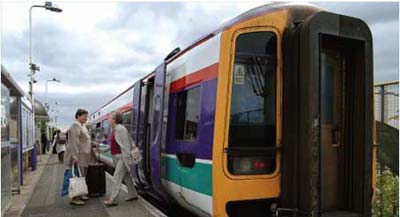 140. The City of Edinburgh Council plans to have its tram line between Newhaven and Edinburgh Airport operational by 2011. Strathclyde Partnership for Transport ( SPT) and Glasgow City Council are developing proposals for Clyde Fastlink, a dedicated bus route serving key locations on the Clyde Waterfront which is designed to be capable of being adapted to light rail. The Government wants to make it possible for everyone attending the Commonwealth Games to arrive by public transport or non-motorised means. A study commissioned by the North East Scotland Transport Partnership ( NESTRANS) is looking at how best to deliver Aberdeen Cross-rail, a project involving the provision of new stations and improved rail services between Stonehaven and Inverurie.
140. The City of Edinburgh Council plans to have its tram line between Newhaven and Edinburgh Airport operational by 2011. Strathclyde Partnership for Transport ( SPT) and Glasgow City Council are developing proposals for Clyde Fastlink, a dedicated bus route serving key locations on the Clyde Waterfront which is designed to be capable of being adapted to light rail. The Government wants to make it possible for everyone attending the Commonwealth Games to arrive by public transport or non-motorised means. A study commissioned by the North East Scotland Transport Partnership ( NESTRANS) is looking at how best to deliver Aberdeen Cross-rail, a project involving the provision of new stations and improved rail services between Stonehaven and Inverurie.
| THE GOVERNMENT WILL PURSUE THE IMPLEMENTATION OF THE MEDIUM TERM PROGRAMME OF ELECTRIFICATION IDENTIFIED IN 'SCOTLAND'S RAILWAYS'. | |
141. The Government is committed to developing incentives such as the Freight Facilities Grant and Waterborne Freight Grants to encourage the movement of a higher proportion of freight by rail and water. It will be important to ensure that significant freight-generating uses are located as close to the rail network, strategic freight facilities and ports as possible. Research on sustainable freight facilities concluded that development of a number of interchanges at strategic locations on the transport network would help to promote modal shift. There is considerable potential for the development of short sea shipping routes between UK ports.
142. Of the 2,736 miles of rail track in Scotland only 23% is currently electrified. This results in a significant reliance on diesel trains which contribute to CO 2 emissions. The Government will pursue the implementation of the medium-term programme of electrification identified in Scotland's Railways together with an extension to Grangemouth over the period to 2014. Electrification of the entire strategic rail network based on renewable and clean power generation would substantially reduce emissions and the Government believes that this must be the long-term objective. The focus will be on heavily trafficked routes in the first instance.
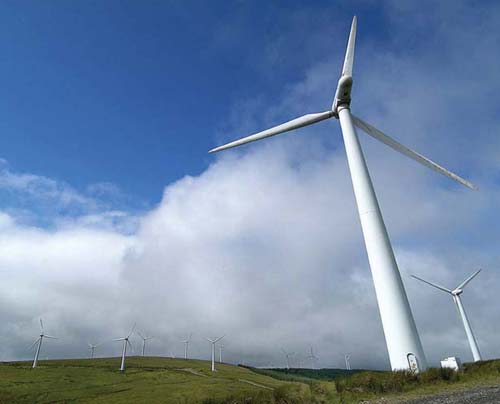 143. The canal network is currently an underused component of our transport infrastructure. It has links to some of Scotland's major ports and could be used to remove non time-critical freight from the road and rail networks if supported by the development of appropriate facilities. British Waterways Scotland is taking forward plans designed to stimulate greater use of the network and bring new life and mixed use development to the canal environs. The Caledonian Canal can play a role in strengthening water-based connectivity between Scandinavia and Ireland.
143. The canal network is currently an underused component of our transport infrastructure. It has links to some of Scotland's major ports and could be used to remove non time-critical freight from the road and rail networks if supported by the development of appropriate facilities. British Waterways Scotland is taking forward plans designed to stimulate greater use of the network and bring new life and mixed use development to the canal environs. The Caledonian Canal can play a role in strengthening water-based connectivity between Scandinavia and Ireland.
ENERGY
Renewable Energy
144. While the target of generating 50% of the electricity we use from renewable sources by 2020 is likely to be met, we also need to derive a higher proportion of our energy requirements for heating and transport from renewable sources. In line with EU objectives, the Scottish Government is committed to working towards deriving 20% of total energy use from renewable sources by 2020. It has consulted on a framework for the development and deployment of renewable energy technologies prepared in co-operation with the Forum for Renewable Energy Development in Scotland ( FREDS).
 145. The Government is committed to establishing Scotland as a leading location for the development of renewable energy technology and an energy exporter over the long term. It is encouraging a mix of renewable energy technologies, with growing contributions from offshore wind, wave, and tidal energy, along with greater use of biomass. The aim of national planning policy is to develop Scotland's renewable energy potential whilst safeguarding the environment and communities.
145. The Government is committed to establishing Scotland as a leading location for the development of renewable energy technology and an energy exporter over the long term. It is encouraging a mix of renewable energy technologies, with growing contributions from offshore wind, wave, and tidal energy, along with greater use of biomass. The aim of national planning policy is to develop Scotland's renewable energy potential whilst safeguarding the environment and communities.
146. The harnessing of renewable sources of energy is effecting a radical change in Scotland's energy economy, and the location of many of these resources means that rural areas are well placed to benefit. As wave, tidal, biomass, solar, hydrogen and offshore wind technologies continue to develop, they will become more competitive and commercially attractive, allowing them to make large contributions to Scotland's energy mix over the next 25 years. Hydro-power and onshore wind are the renewable technologies likely to make the largest contributions initially and biomass should begin to make a significant contribution in the next decade. Given the potential environmental impacts, there is probably limited scope for new large hydro-electric schemes. However, there is significant interest in the development of small-scale schemes on watercourses and canals and the potential to link hydro-power development with pumped storage. Scotland has one of the best environments in the world for wave and tidal generation and marine technologies have the potential to make a major contribution in the longer term. A strategy for the development of marine renewable energy is being prepared.
147. The potential of some renewable energy technologies has a strong spatial dimension. The Crown Estate has identified the Moray Firth and a zone to the East of the Firths of Tay and Forth as locations with potential for the development of offshore windfarms. The north and west coasts offer a number of locations with very substantial potential for harnessing the energy of tidal streams. Further environmental assessment of Scottish coastal waters is being undertaken to inform locational decisions.
148. The Fife Energy Park at Methil demonstrates the potential for adapting coastal facilities created to support the oil and gas industry to new uses related to the development of renewable energy. There may also be opportunities to site new renewable energy facilities where they can take advantage of the transmission capacity released by the closure of existing power stations. Biomass plants should be sited where they can make best use of locally available resources.
149. Small-scale renewable energy projects can make a valuable contribution locally. They can play a vital role in supporting the sustainable development of remote rural and island communities in particular. Cumulatively, they can make a significant contribution to the development of a more decentralised pattern of energy generation. Their local environmental effects will need careful management.
150. The Scottish Government is assisting planning authorities with the preparation of supplementary planning guidance on the location of wind farms. It is also participating in a UK-wide project to identify technical solutions to potential conflicts between wind farm developments and radar systems. In parallel, it is working to promote regional solutions to potential conflicts between civil aviation radar and wind farms in the South of Scotland Terminal Manoeuvring Area.
Baseload Power Stations
151. Given the variable output of some renewable sources of energy, large baseload power stations will have a role to play in maintaining the stability of electricity supply for some time ahead. While important elements of Scotland's existing baseload generating capacity are scheduled to close over the next 10 years, steps are being taken to extend the lives of existing power stations and develop new ones.
152. Low carbon fossil fuel technologies mean that coal-based electricity generation can continue to make an important contribution to Scotland's energy mix and Scottish companies are world leaders in the field. For example, the Scottish Power owned Longannet station is on the shortlist of the current UK carbon capture and storage competition. The UK Government, working with the Scottish Government, plans in principle to fund 4 demonstration carbon capture and storage projects, with one of these being the competition winner, subject to a consultation in summer 2009. Other potential locations for carbon capture and storage projects include Hunterston, where there is capacity to accommodate a major new clean coal fired power station, and Peterhead, where the technology could be applied at the existing gas plant. As a general principle, the Scottish Government considers that new generating plant should be sited adjacent to existing thermal power stations, where it can make use of existing supporting infrastructure (see Map 10). The Scottish Government is currently considering which mechanisms might be put in place through its consenting powers to ensure that carbon capture and storage technology is installed at new and existing baseload stations as soon as possible, with the aim of decarbonising the electricity generation sector by 2030.
MAP 7 ELECTRICITY TRANSMISSION SYSTEM
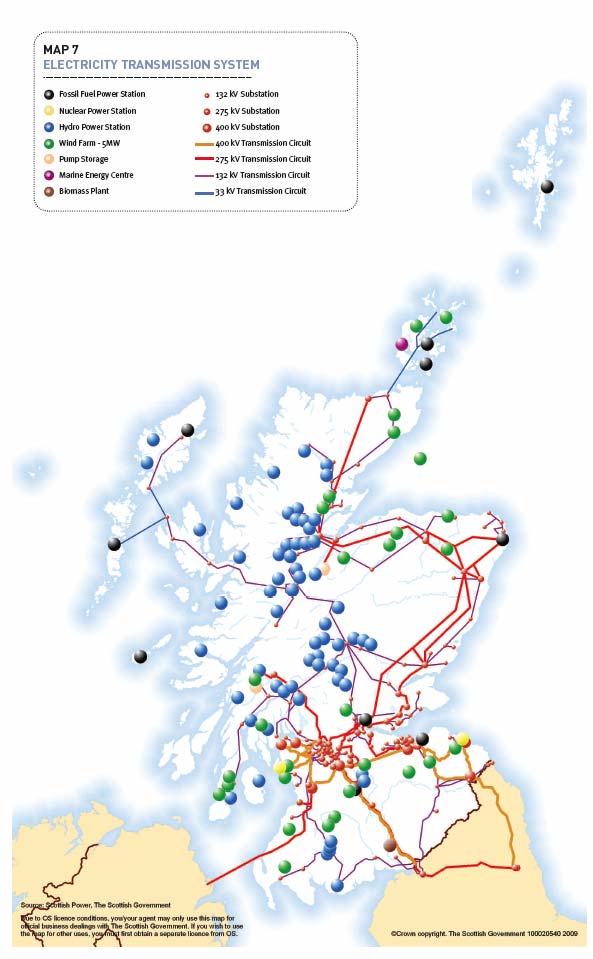
153. British Energy has announced that the Hunterston B nuclear power station in North Ayrshire will continue to operate until at least 2016. The nuclear power station at Torness will continue to make a contribution until at least 2023. The Scottish Government does not support the construction of new nuclear power stations in Scotland. It favours the timely decommissioning and environmental remediation of redundant nuclear power stations and related buildings and recognises that sites will be needed for new waste management and disposal installations to support decommissioning activities generally. It will expect site operators to work closely with planning authorities and SEPA in the design and siting of radioactive waste management installations.
Fossil Fuels
154. The oil and gas industry continues to make a major contribution to Scotland's economy. The development of Atlantic oil and gas reserves may create requirements for further storage, treatment and support services on the Shetland Islands, the Outer Hebrides and the West Coast.
155. There are large extractable reserves of coal in South and Central Scotland. Coal is won by opencast methods across the Central Lowlands from Ayrshire to Fife and permission has been granted for workings in Dumfries and Galloway.
156. The methane held in coal beds deep beneath Central Scotland is estimated to be equivalent to at least 10% of Scotland's gas demand for the next 25 years. Most of these coal beds are well located in relation to existing gas pipelines and, given their proximity to our main coal-fired power stations, there is potential for combining the extraction process with carbon capture and storage. Planning authorities in the Central Belt should consider the potential for onshore gas extraction when preparing their development plans. As the pipe network required to facilitate gas extraction would extend across local authority boundaries, authorities may need to work together to develop a consistent planning policy framework.
Electricity Transmission
157. The pattern of the existing electricity grid (see Map 7) reflects the relationship of existing power stations to settlement. New capacity for the generation of electricity from renewable sources is being developed across Scotland. However, much of this is in remoter coastal and upland areas and requires to be transmitted to centres of population through the grid. The capacity of parts of the system needs to be increased to facilitate this transmission. Given the long lead-in time for electricity transmission projects, much of this work must be taken forward soon. There is a presumption in favour of adequate grid connection for areas which planning authorities identify as preferred areas for renewable energy development.
MAP 8 TRANSMISSION SYSTEM REINFORCEMENTS
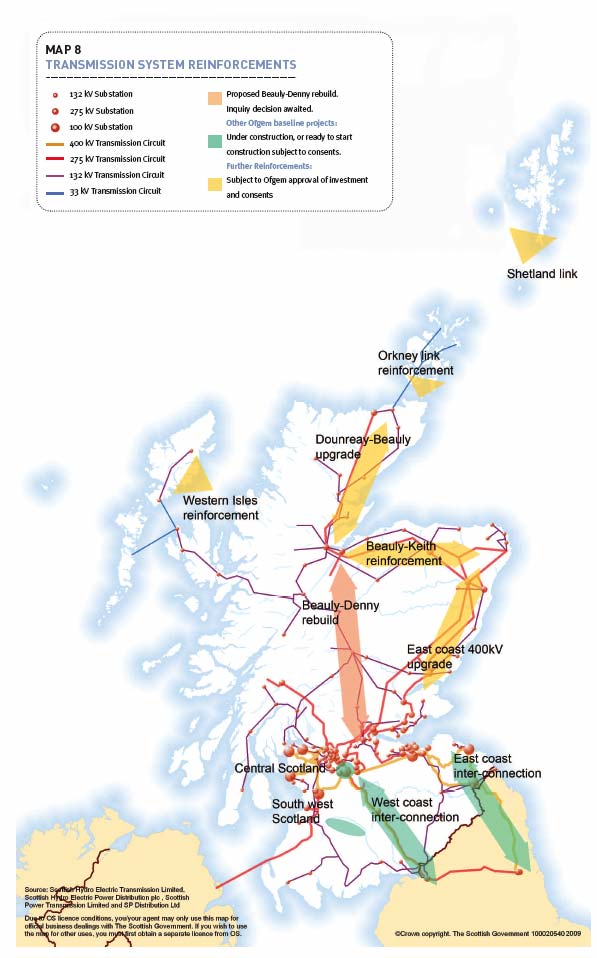
158. The electricity market regulator, Ofgem, has the role of approving, on the basis of an economic assessment, investment in potential upgrades proposed by the Scottish transmission system owners. Ofgem has approved a number of transmission system reinforcements as "baseline projects". These include:
- the Beauly-Denny line project;
- the upgrading of the substation at Sloy (which already has planning permission);
- increased north-south transfer capability in Central Scotland;
- a new South-West Scotland transmission line and associated infrastructure; and
- strengthening the Scotland-England interconnectors.
The Ofgem assessment does not remove requirements for Electricity Act and planning consent.
159. In addition to the "baseline projects", the Scottish transmission system owners have identified a number of further key reinforcements. Sub-sea links will be essential to realise the substantial renewable potential of the Outer Hebrides, Orkney and the Shetland Islands. Upgrades to the existing Beauly - Dounreay, Beauly - Keith and East Coast transmission lines will be required. Central Scotland and Argyll are other areas where the transmission system needs to be strengthened. While grid reinforcement is likely to take place along existing routes, some new connections and route modifications may be necessary (see Map 8).
160. The reinforcements which the Scottish Government proposes to designate as national developments are shown on Map 10. They will require to be accompanied by a programme of landscape maintenance and enhancement. In identifying these reinforcements, no assumption is being made about the need for transmission, or transmission routes, between Beauly and Denny. The decision on that matter will be made by Scottish Ministers in the light of the recent public inquiry into the application by Scottish Hydro Electric Transmission Limited and Scottish Power Transmission Limited for consent under section 37 of the Electricity Act.
161. In March 2009 the Electricity Network Strategy Group published the report Our Electricity Transmission Network: A Vision for 2020, identifying grid reinforcements necessary to meet UK and Scottish renewable energy targets. The report concludes that reinforcement of the land-based interconnectors to England and new sub-sea cables off Britain's west and east coasts would provide sufficient transmission capacity to allow up to 11.4 GW of power to be generated from renewable sources in Scotland.
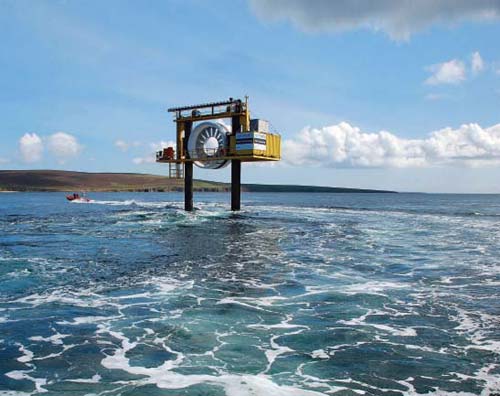 Sub-Sea Grid
Sub-Sea Grid
162. The Scottish Government is committed to a strategic approach to electricity transmission and looking to how the system might evolve beyond currently programmed upgrades, with a particular focus on export. It is in discussion with North Sea partners and the European Commission on proposals for a North Sea grid, to take electricity from Scotland and other countries in the northern North Sea direct to major continental markets. It is also working with the governments of the Republic of Ireland and Northern Ireland to investigate the potential for developing sub-sea cable routes to harness marine energy resources to the west and south-west of Scotland. By connecting geographically dispersed regions, a sub-sea grid (see Map 9) would offer the additional advantage of smoothing out variations in output from sources such as windfarms as weather patterns move across Europe.
Heat
163. About 50% of Scotland's energy demand is for heat. While the main energy source for heating is currently gas, Scotland has one of the best climates in Europe for the solar heating of buildings. Higher building standards and improved insulation can substantially reduce heating requirements. There is considerable potential to derive more heat for domestic, business and industrial purposes from sources such as waste and biomass and by using ground, water and air source heat pumps. Better use can also be made of the heat produced by electricity generation, industrial processes and anaerobic digestion. Many of these sources of heat can be harnessed at a domestic, local or community level, but some require larger scale operations. The Scottish Government is committed to helping to build a commercially viable and diverse heat industry and has consulted on a Renewable Heat Action Plan.
Decentralised Production
164. The Government is keen to facilitate the development of a more dispersed pattern of energy generation and supply as part of the response to the climate change challenge. This will involve encouraging community and household heat and power generation, the decentralisation of generation capacity and the development of local heat networks. The efficiency of power stations can be substantially increased by capturing the heat produced by electricity generation to warm our buildings. Advances in technology which allow heat to be transmitted efficiently over longer distances may create scope for developing heat networks based on some of our existing power stations. Harnessing components of the waste stream and other biomass offers the potential to develop new, smaller combined heat and power ( CHP) stations close to communities. In some areas, particularly in rural Scotland, wood or other biomass may provide the most appropriate fuels for local heating schemes. Investment in transmission and distribution networks may be required to facilitate more decentralised patterns of electricity generation.
165. Planning authorities have an important role in facilitating more decentralised patterns of energy generation and supply. They should take account of the potential for developing heat networks when preparing development plans and considering major development proposals.
WASTE MANAGEMENT
Municipal, Commercial and Industrial Waste
166. Waste management infrastructure has an important part to play in realising the Scottish Government's objective of a greener Scotland. The targets set by the EU Landfill Directive necessitate a move away from landfill, and recognition of the substantial potential of waste as a resource. Currently, we have capacity to divert some 1 million tonnes of municipal waste from landfill. This will need to be increased to some 1.5 million tonnes by 2010, over 2 million tonnes by 2013 and some 2.5 million tonnes by 2020. Additional capacity will also be required to treat commercial and industrial waste. Development of the necessary infrastructure is a Government priority.
167. Key elements of the Scottish Government's Waste Policy are:
- increasing the proportion of municipal waste recycled or composted to 40% by 2010; 50% by 2013; 60% by 2020; and 70% by 2025;
- reducing the proportion of municipal waste going to landfill to no more
than 5% by 2025; - stopping the growth in municipal waste by 2010;
- a 25% cap on energy from mixed municipal waste;
- a requirement that energy from waste plants achieve high efficiency in terms of energy recovery; and
- the preparation of a revised National Waste Management Plan which will set targets for reducing the amount of commercial and industrial waste sent to landfill.
168. The planning system has a crucial role to play in ensuring that installations are delivered in time to allow waste management targets to be met. Planning authorities should facilitate the provision of a network of waste management installations which enable the movement of waste to be minimised and EU and national targets to be met, taking account of opportunities to derive energy from waste and develop local heat networks. To support the Government's drive towards a low carbon economy, relationships between waste, heat and other forms of energy must be fully considered by planning authorities at an early stage in the preparation of development plans and in determining major planning applications. Provision for the additional waste management capacity required at city-region level must be made in strategic development plans. The 25% cap on energy from municipal waste will apply at the local as well as the national level and will be a material consideration in development management decisions. The Scottish Government will publish separate guidance on its operation.
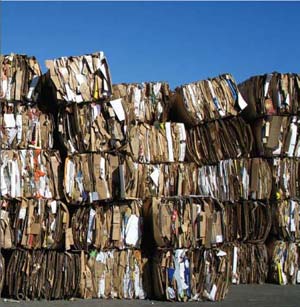 169. Other types of waste management infrastructure will include recycling and composting installations, anaerobic digestion plants, transfer stations and plants to turn recycled materials into products. Relevant considerations in the siting of installations will include proximity to sources of waste, the transport network and the relationship of intermediate transfer and treatment installations to tertiary waste management installations. Modern treatment and transfer centres are contained facilities which can be accommodated on industrial estates. Where possible, they should be located close to the population centres they serve. They should be linked to tertiary waste management installations in a "hub and spoke" arrangement, where possible by rail or water.
169. Other types of waste management infrastructure will include recycling and composting installations, anaerobic digestion plants, transfer stations and plants to turn recycled materials into products. Relevant considerations in the siting of installations will include proximity to sources of waste, the transport network and the relationship of intermediate transfer and treatment installations to tertiary waste management installations. Modern treatment and transfer centres are contained facilities which can be accommodated on industrial estates. Where possible, they should be located close to the population centres they serve. They should be linked to tertiary waste management installations in a "hub and spoke" arrangement, where possible by rail or water.
170. The forthcoming National Waste Management Plan may identify a need for a number of national installations to deal with particular waste streams. Any such installations are likely to be designated as national developments in the third National Planning Framework ( NPF3).
Radioactive Waste
171. Scottish Government policy on higher activity radioactive waste is currently being developed. However, in accordance with the proximity principle, it is likely that facilities to manage this waste will be required at locations close to its source of origin.
172. The decommissioning of the former nuclear power research site at Dounreay in Caithness forms part of a programme of investment in specialised infrastructure designed to treat and manage radioactive waste safely. Highland Council has granted planning permission for a low level radioactive waste facility at Dounreay. A further facility will be needed in the South of Scotland for radioactive waste arising from processes elsewhere. These facilities will be developed in line with the Policy for the Long Term Management of Solid Low Level Radioactive Waste in the United Kingdom published in March 2007.
173. Radioactive waste also arises from the healthcare sector, the oil and gas industry and educational establishments. At present certain types waste are sent to England because no disposal route exists in Scotland. With the support of the Scottish Government, strategies are being developed on a UK-wide basis for both nuclear and non-nuclear industry low level radioactive wastes, to ensure that effective treatment and disposal routes exist throughout the UK.
WATER AND DRAINAGE
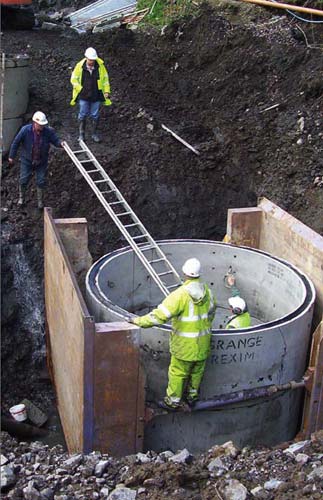 174. The renewal of water and drainage infrastructure involves substantial investment over a significant period of time. It is therefore important to ensure that Scottish Water's long-term investment programme is based on a thorough assessment of needs, including the Government's priorities for economic and housing development, area regeneration and environmental improvement.
174. The renewal of water and drainage infrastructure involves substantial investment over a significant period of time. It is therefore important to ensure that Scottish Water's long-term investment programme is based on a thorough assessment of needs, including the Government's priorities for economic and housing development, area regeneration and environmental improvement.
175. Scottish Water is undertaking a £2.5 billion investment programme between 2006-10. Priorities for the improvement of water and drainage infrastructure between 2010 and 2014 have also been identified. Amongst the objectives set by Scottish Ministers is a requirement to provide sufficient strategic infrastructure capacity to meet the needs of all estimated new housing developments and the domestic requirements for commercial and industrial developments over the period to 2014. Ministers will ensure that development needs continue to be taken into account in subsequent regulatory periods. Scottish Water is working with local authorities and developers to ensure that it prioritises the development of new strategic infrastructure in accordance with its quality investment programme, the spatial priorities identified in this Framework and the priorities identified by planning authorities in their development plans. Generally, lack of capacity in water and drainage infrastructure should no longer be a significant constraint on development.
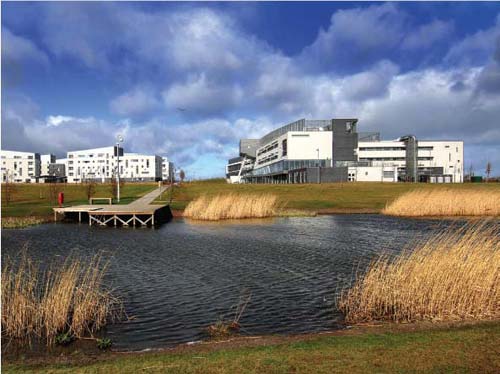 176. In the West of Scotland, the Metropolitan Glasgow Strategic Drainage Partnership has a key role to play in facilitating regeneration on the east side of the Glasgow conurbation, including realising the potential of the Clyde Gateway and delivering the facilities for the 2014 Commonwealth Games. Substantial investment in water and drainage infrastructure will also be needed to support expansion in the A96 Corridor between Inverness and Nairn, and the expanded communities to be served by the Borders rail line.
176. In the West of Scotland, the Metropolitan Glasgow Strategic Drainage Partnership has a key role to play in facilitating regeneration on the east side of the Glasgow conurbation, including realising the potential of the Clyde Gateway and delivering the facilities for the 2014 Commonwealth Games. Substantial investment in water and drainage infrastructure will also be needed to support expansion in the A96 Corridor between Inverness and Nairn, and the expanded communities to be served by the Borders rail line.
WATER RESOURCE MANAGEMENT AND FLOODING
177. The projected increase in flood risk as a consequence of climate change has implications for the siting of new development, the protection of existing development, coastal defence and the safeguarding of cultural heritage. Reference to SEPA's internet based map of areas at risk from flooding will help to inform decisions on the location of development and the provision of mitigation and attenuation measures where vulnerable sites have been selected for development.
178. The Government is committed to an integrated approach to the management of water, encompassing environmental protection, public health, flood risk management, the supply and drainage infrastructure required for development, and aquaculture. Improving the quality of the water environment can help to create healthier ecosystems, deliver substantial amenity and recreational benefits and contribute to urban regeneration. The Water Environment and Water Services Act 2003 provides a framework for the sustainable management of water resources. Comprehensive river basin management plans are being prepared, based on an analysis of all human impacts on water systems. The plans will be published in 2009, and will set environmental objectives for individual water bodies. Planning authorities will have to have regard to them when preparing development plans.
179. Sustainable catchment management measures have an important part to play in providing long-term solutions to problems of flooding. They can also be integrated into wider greenspace and ecological networks. By taking a catchment based approach, we can minimise the risks to people and property and tackle the causes and effects of flooding. Flood risk can be reduced by slowing the flow of water to burns and rivers. This can be achieved by increasing the capacity of natural features such as wetlands, meanders and flood plain woodlands as well as by engineered flood protection structures. Canals should also play a role in catchment management and flood risk reduction. The Scottish Government's Flooding Risk Management Act modernises the framework for sustainable flood management. Local authorities and SEPA will work together to produce flood management plans identifying measures to secure an integrated approach to flood risk reduction.
COMMUNICATIONS TECHNOLOGY
 180. Access to modern information and communications technology is now vital for business and Scotland's geography makes the delivery of comprehensive coverage challenging. The Scottish Government has therefore intervened with a programme of investment which has made broadband accessible to over 99% of households. Scotland is now one of Europe's leaders in broadband availability, placing it in a strong position to take advantage of the economic opportunities offered by modern communications technologies. In addition, the Scottish Government is committed to delivering broadband to those individuals and businesses who have reported that they do not yet have access through the Broadband Reach Project, in a contract worth up to £3.3 million.
180. Access to modern information and communications technology is now vital for business and Scotland's geography makes the delivery of comprehensive coverage challenging. The Scottish Government has therefore intervened with a programme of investment which has made broadband accessible to over 99% of households. Scotland is now one of Europe's leaders in broadband availability, placing it in a strong position to take advantage of the economic opportunities offered by modern communications technologies. In addition, the Scottish Government is committed to delivering broadband to those individuals and businesses who have reported that they do not yet have access through the Broadband Reach Project, in a contract worth up to £3.3 million.
181. In February 2009, Ofcom, the telecommunications regulator, announced a package of measures designed to encourage the roll-out of next-generation broadband throughout the UK. The current focus of Scottish Government support for high capacity broadband is on improvements to digital connectivity in the public sector, including health and education facilities and local authority premises. For example, Pathfinder projects are delivering scalable, high-capacity broadband to all schools (and many other public sites) in the Highlands and Islands and the South of Scotland, with a Government contribution of £93m.
182. The planning of major infrastructure projects such as railways, roads, tunnels, pipelines and electricity cables should take account of opportunities to extend the digital communications network. The switch to digital television between 2008 and 2012 may create opportunities to provide new community information, shopping and entertainment services.
There is a problem
Thanks for your feedback

